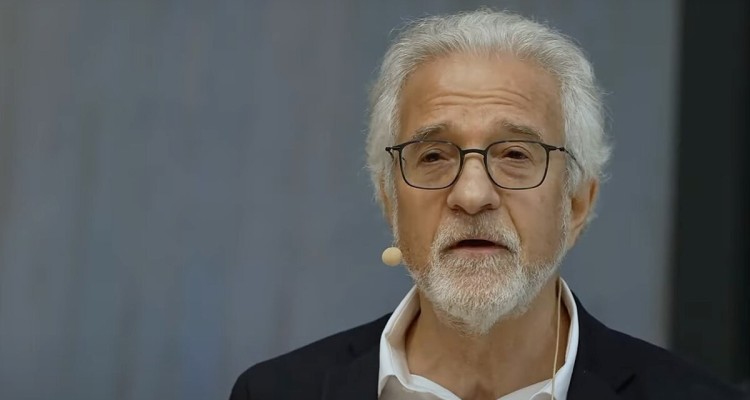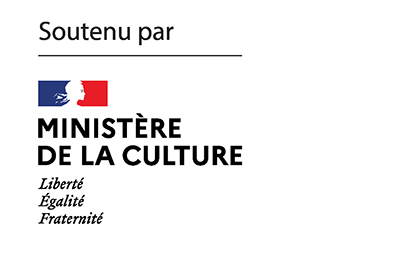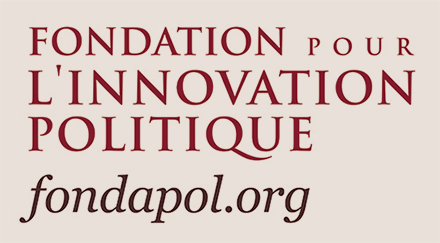What if anti-Judaism were not just an irrational prejudice against Jews, but a fundamental structure of Western thought? This is the thesis defended by David Nirenberg in Anti-Judaism, which the Collège de France conference presented in June 2023 on the occasion of its translation into French. In it, we discover a vertiginous problem: the dependence of our moral, philosophical and critical systems on a repulsive figure of the imaginary Jew.

I’ve given my talk the rather pretentious title “Anti-Judaism, Critical Thought, and the Possibility of History,” so perhaps I should start by explaining why I think these three things should be thought about together. By the possibility of history, I mean the possibility of some very general questions. Does the past affect how we perceive the present? Do our concerns in the present affect the ways in which we see the past? Does what we have thought in the past—the history of our ideas—affect what and how we think in the present and future? How do forms of life and thought at one point in time and place affect those in another? This type of question once animated the discipline of history. But in the second half of the 20th century, many—historians, philosophers, psychologists—became increasingly suspicious of such questions, and rightly so, given the place of historical genealogies and teleologies in the formation of the nationalist, racist, and colonialist ideologies that had brought tragedy to much of the world in the first half of that century. “History,” as Michel Foucault put it in the 1960s, “is for cutting.”
Cutting is indeed an important (and critical, in the sense of seeking to question our certainties) possibility of history. Today intellectual historians largely focus their efforts on reconstructing the context within which a given idea was expressed, rather than exploring the movement and transformation of ideas across time and space. This emphasis on ever-more-particular historical contexts is valuable because it can help us to sever some of the fantastic continuities that cultures construct between past and present. But it does have an important limitation: it cannot help us to perceive those continuities, or to reconstruct or understand them. In the words of Montaigne “Cut anything into tiny pieces and it all becomes a mass of confusion.”
I think that this is an equally important and equally critical (in the sense of seeking to question our certainties) possibility of history. Neglecting it is dangerous, because if the present is not independent of the past, if the cognitive possibilities at any given moment—even our own—are to any degree conditioned by habits of thought acquired over time, then we need a way to become aware of those habits, lest we find ourselves acting in their grip.
We should want to ask why so many diverse cultures— even cultures with no Jews living among them—have thought so much about Judaism. What work did this thinking do for them in their efforts to make sense of the world?
The problem could not be more general, but the history of thinking about Judaism poses a particularly acute example, because it is simultaneously a highly charged field in the present, and one with a long history. Ancient Egyptians spent a good deal of papyrus on the Hebrews; early (and not so early) Christians filled pages attempting to distinguish between the New Israel and the Old; Muhammad’s followers were intensely worried about the Prophet’s relation to Jews and “Sons of Israel”; medieval Europeans invoked Jews to explain topics as diverse as famine, plague, and the tax policies of their princes. And in the vast archives of material that survive from early-modern and modern Europe and its cultural colonies, it is easy enough to demonstrate that words like “Jew,” “Hebrew,” “Semite,” “Israelite,” and “Israel” appear with a frequency stunningly disproportionate to the actual number of Jews living in those societies.
We know that “Jew” is not the same as “Hebrew,” Israelites are not Israelis, Israeli need not mean Zionist or Jew (or vice versa), and that many have been called “Jew” or “Judaizer” who in no way identify with Judaism. Yet we also know that all these words and categories exist in proximity, and that however much we may insist on separating them, they have often bled together across the long history of thought.
Given the political importance of some of those categories in our own day, we should want to ask why so many diverse cultures— even cultures with no Jews living among them—have thought so much about Judaism. What work did this thinking do for them in their efforts to make sense of the world? Did that work, in turn, affect the ways in which future societies—including our own— could or would think with and about Judaism? Without asking such questions, we cannot be confident that our own understanding of our world is not itself being shaped by old habits of thought, including those habits of thought I will call anti-Judaism.
Let me illustrate the problem through the example of a thinker who lived and wrote at a time when such questions could not have been more critical. Hannah Arendt fled Nazi Germany first to Paris, in 1933, and then to the United States. In Part 1 of her The Origins of Totalitarianism, published in 1951, she addressed a question very much like mine: How and why do ideas about Jews and Judaism become convincing explanations for the state of the world in a given time and place? She stressed the failure of anti-Semitism as a sufficient explanation. The term “anti-Semite” labels enemies of Jews and Judaism, but it does not explain the nature of or reason for that enmity. On the contrary, it implies that there is no reason for that enmity, that the enmity is irrational.
Any critical theory should inquire into its habits of thought, the history of its ideas, even its very words. In the case of Anti-Judaism, this proves very difficult to do.
But as Arendt put it, “an ideology which has to persuade and mobilize people cannot choose its victims arbitrarily.” The choice must make cultural sense if it is to prove convincing, capable of moving masses. Why and how do ideologies make cultural sense? One answer might be that ideologies make cultural sense because they accurately describe something about the world as it is. This was Arendt’s approach: Anti-Semitic ideologies described something that the Jews really were, something that they really did. She found her strong link between ideology and reality in what she considered to be “specifically Jewish functions” in the capitalist economies of the modern state: “All economic statistics prove that German Jews belonged not to the German people, but at most to its bourgeoisie.”

I would answer differently the question of why ideologies make cultural sense. My stress would be on how our very perception of reality is shaped by the conceptual frameworks and cognitive tools available. For example, Arendt’s statistical “truths” were sometimes drawn from the “fighting scholarship” of Nazis like Walter Frank and his Reich Institute for the History of the New Germany. But even if her choices had been less partisan, they still would inevitably have been theory-laden. Our thought always depends on concepts and categories, which themselves have a history. Even the very words we use are already the products of long histories, and shape our possibilities of thought. As Nietzsche put it, “jedes Wort ist ein Vorurteil”: every word is already a prejudice, a prejudgement. For that reason, any critical theory should inquire into its habits of thought, the history of its ideas, even its very words. In the case of Anti-Judaism, this proves very difficult to do.
Arendt herself specifically rejected such an approach to the history of ideas about Judaism—an approach she scornfully dubbed “Eternal anti-Semitism.” Appeals to history, as she understood them, were simply attempts to deny that Jews were “co-responsible” for the ideologies aimed against them in the present, because of what they really did and really were. Arendt’s distinction between our reality and the history of our ideas is a common and influential one, but it seems to me to be too sharp and too dangerous.
Because critical thought in the Western tradition has so often imagined itself as an overcoming of Judaism, it has the capacity to introduce Judaism in whatever it criticizes.
Two of Arendt’s fellow exiles, the philosophers Max Horkheimer and Theodor Adorno, put the danger well. In the 1930s they, too, criticized what they perceived to be their fellow Jews’ overeager participation in economic life, and understood that participation as the cause of anti-Semitic ideologies. But by the 1940s, the fantastic force that European ideas about Jews had acquired seemed to them beyond any reality. What gave those ideas their power, they suggested in 1944, was not their relation to reality but rather their exemption from reality checks, that is, from the critical testing to which so many other concepts are subjected: “What is pathological about anti-Semitism is not projective behavior as such, but the absence of reflection in it.”
Why is anti-Semitism so resistant to reflection? Why should it be so difficult—even for the greatest thinkers of the age, such as Arendt, or (to pick a much more extreme case) her teacher Heidegger—to become reflective about these concepts and explanatory frameworks? The answer I propose is that this has to do with the extraordinary place of Judaism in the history of critical thought itself: Because critical thought in the Western tradition has so often imagined itself as an overcoming of Judaism, it has the capacity to introduce Judaism in whatever it criticizes.
Karl Marx provides an excellent example (for good or ill) of the phenomenon. In two essays he wrote in 1844, “On the Jewish Question” and (together with Friedrich Engels) “The Holy Family: or Critique of the Critical Critique,” Marx argued that Judaism is as much an attitude as a religion, an attitude of spiritual slavery and alienation from the world. This alienation is Jewish, but not exclusive to the Jews. Money is the god of Judaism, but it is also the god of any man, no matter his confessed religion, who alienates the products of his life and labor for it. So long as money is god, which is to say so long as there is private property, not even the conversion of all the Jews to Christianity could achieve the emancipation of society from Judaism, for Christian society will continue to “produce Judaism out of its own entrails.”
For Marx, “the Jewish question” is as much about the basic tools and concepts through which individuals in a society relate to the world and to one another as it is about the presence of “real” Judaism and living Jews in that society. He understood that some of these basic tools—such as money and property—were thought of in Christian culture as “Jewish,” and that those tools therefore could produce the “Jewishness” of those who used them, whether those users were Jewish or not. “Judaism,” then, is not only the religion of specific people with specific beliefs, but also a category, a set of ideas and attributes. And “anti-Judaism” is not simply an attitude toward the actions of real Jews and their religion, but a way of critically engaging the world.
Marx’s notion that our concepts can themselves create the Judaism of the world to which they are applied is critical, because it asks us to reflect on how our own habits of thought project figures of Judaism into the world and thereby create the reality they claim to discover. From that insight, Marx could have proceeded to a criticism of those habits of thought. He might, for example, have asked why it was that Christian European culture so often characterized capitalism as Jewish, and written a history intended to make his contemporaries reflect more on that association. Instead, he exploited those habits, reinforcing the old Jewishness of capitalism to put it to a new kind of work: that of planning a more perfect world, without private property or wage labor.
And “anti-Judaism” is not simply an attitude toward the actions of real Jews and their religion, but a way of critically engaging the world.
Marx demonstrates how inquiring into the roles played by ideas about Judaism in our thinking about the world can stimulate the type of reflection we need to become conscious of some of our own habits of thought. But it also points to a real danger in asking such “Jewish questions”: the danger that, like Marx, we stop asking them as soon as we reach an answer that harmonizes comfortably or usefully with our own view of the world. Such questioning gives us the illusion of engagement in critical thought, while in fact only strengthening our preconceptions and convictions.
Not stopping the questioning too early requires a long history. How long? There is no one answer to that question. By the time accounts of “Israel” and “Jews” become visible in ancient Egypt, they had already been interwoven with other histories and cosmologies, and become flexible enough to help their tellers make sense of events ranging from Greek invasion to Roman tax policy. We can glimpse that work in the surviving sources. It may seem puzzling, for example, that Egyptian delegations repeatedly called Roman emperors like Claudius, Trajan, and Commodus “Jews” to their faces. But it must have made powerful sense to the delegates, since they were willing to be martyred for it.
Similarly, the earliest surviving texts produced by a follower of Jesus—the epistles of Paul—are already engaging multiple traditions, both Jewish and gentile, each with its own deep history, in order to create a “critical theory” about how to interpret the world. When Paul sets out to demonstrate that the earthly Jerusalem is aligned with slavery, carnality, law, blind literalism, and the death of the soul, he is deploying critical strands of Jewish exegesis and Greek philosophy, well-worn already in his own day. But he is weaving those threads into new cloth, using them to think through the different demands that prophecy places upon Jewish and gentile followers of Jesus.
Some of the formulations he developed to express those differences—”the letter kills, but the spirit vivifies” (II Corinthians 3:6)—transformed history as much as they drew on it, giving the future a new way to think about texts, transcendence, and the material world. And as Jesus’ religion spread, Paul’s specific vocabulary, already saturated in history, gained new meanings and power. For example, his use of the word “Judaize” in Galatians 2:14 to characterize a gentile convert’s inappropriate relation to the laws and customs of a tradition became shorthand for a logic that could make sense of any “incorrect” relationship to the material world. As the poet George Herbert put it in 1633:
He that doth love, and love amisse,
This worlds delights before true Christian joy, Hath made a Jewish choice… .
And is a Judas-Jew.
Not only Paul. Jesus’ sayings in the Gospels are also full of statements with the potential to teach his followers to give the falsehoods and confusions of this world a “Jewish” face, as here, in his sermon known as the 7 woes of the Pharisees. In my book I try to show that no step in the formation of this critical tradition was inevitable, though in retrospect it came to appear to many, Christian and Muslim (and also Jew), as continuous and eternal. It became useful and powerful even in times and places remote from contact with living Jews. Medieval rebellions against “Jewish kings,” Reformation and Counter-Reformation attacks on the “Judaizing” of Popes and Protestants, even Shakespeare’s creation of the character of Shylock in order to represent the potential “Jewishness” of Christian merchants (there were no Jews in Shakespeare’s England, except the ones invented by writers like him) can all be understood not as reflections of reality or products of irrational prejudice (to name just two of the options commonly chosen by historians), but as aspects of those cultures’ most fundamental habits of critical thought, constantly transformed by being put to new kinds of work.
But far from smashing the idol of anti-Judaism, they gave it a new cult, representing their opponents as in thrall to “Jewish” literalism, blindness, and superstition.
The creative capacity of those habits of thought did not end with the Enlightenment. Spinoza, Bayle, Voltaire, Kant, and many others took aim at the “idols of thought” they argued underpinned the superstition, intolerance, and injustice of their Christian political order. “Dare to know!” “Smash the infamous!” they and their colleagues proclaimed. But far from smashing the idol of anti-Judaism, they gave it a new cult, representing their opponents as in thrall to “Jewish” literalism, blindness, and superstition. Those opponents were Christian kings, courts, and clerics, but the struggle was against “The Spirit of Judaism,” as the Baron d’Holbach titled his book of 1770. All of his contemporaries would have understood that the book’s exhortation—”Then dare, oh Europe! Break the unbearable yoke of the prejudices by which you are afflicted!”—was to break free of such “Jewish” habits of thought (for d’Holbach) as organized religion.
The champions of the traditional Christian order loaded their batteries with the same charge but aimed it against their Enlightenment critics. Their opponents were materialists, literalists, “Jews,” and “Pharisees,” who refused to recognize any god other than human reason and the material world, and treated social and political bonds as if they were commercial contracts. On both sides the critical discourse of anti-Judaism became so important that, by the 1790s, the greatest contemporary thinkers could debate whether the French Revolution represented a victory of “Jew brokers,” in which “the glory of Europe is extinguished forever” (Edmund Burke), or the defeat of a “Jewish” order that turned constitutions into “dead books” of “hard inflexible letters” and reduced subjects to animals “in the starkest contradiction of the spirit of mankind” (Johann Gottlieb Fichte).

Though the number of Jews in revolutionary France was vanishingly small, the role of Judaism in those debates was deeply meaningful. It was the product of a long history of thought that put Judaism at the center of the most vital questions and distinctions of European culture. The distinctions between “spirit and matter, soul and body, faith and intellect, freedom and necessity” (the list is Hegel’s): Western Europe and its heirs had learned to think of all of these in terms of their “Jewishness.”
Hegel himself was no different. In fact, he saw his own philosophy as an overcoming of the “Judaism” of all earlier philosophies, especially Kant’s (which had similarly understood itself as a struggle against “Judaism”). In his predecessors, Hegel saw “the Jewish principle of opposing thought to reality, reason to sense,” an opposition he proposed to overcome through a dialectical synthesis modeled on Christ’s incarnation. For some that was a congenial solution. But for others, such as Schopenhauer, it was Hegel’s philosophy that represented “Jew mythology,” and the Hegelians who stank, as he put it, of Judaism.
From music to mathematics, every modern field of thought produced its critical discourse of anti- Judaism. But we should not confuse the “Judaism” produced by this discourse with whatever we mean by “real” Jews or Judaism.
It is only by taking seriously the logic behind this “Judaizing” discourse that we can understand how not only philosophy but also all of modern Western culture could meaningfully be criticized in terms of Judaism. From music to mathematics, every modern field of thought produced its critical discourse of anti- Judaism. As an Austrian politician quipped in 1907, “culture is what one Jew plagiarizes from another.” But we should not confuse the “Judaism” produced by this discourse with whatever we mean by “real” Jews or Judaism. Of the 112 artists condemned in terms of “Judaism” at the Nazi “degenerate art” exhibition, in 1937, only six were Jews by “race.” The same could be said of many of the musicians (such as Hindemith), mathematicians (Ernst Zermelo, David Hilbert), and countless others whose work was denounced by the Nazis as “Jewish.”
The Nazis were the most relentless and most successful impresarios of this discourse, presenting themselves as rebels against a falsely critical thought that had enslaved the world to Judaism. “The age of rampant Jewish intellectualism is now at an end,” Goebbels declared at the burning of un-German books in 1933. But their success in deploying it—that is, their success in mobilizing much of Europe to attempt to murderously purge itself of the Judaism that afflicted it—cannot be explained by the “real” function of the Jews in Europe, or by some eccentric fantasy imposed on a populace by a powerful propaganda machine. That success took place within a history that encoded the threat of Judaism into some of the most basic concepts of Western thought, regenerating that threat in new forms for new times, and helping many of Europe’s citizens, even its most educated and critical, make sense of their world. Without understanding that history, we cannot understand how a society could so terribly confuse the nature of the dangers that assailed it.
We live in an age with its own “Jewish questions,” an age in which many millions of people are exposed daily to some variant of the argument that the challenges of the world they live in are best explained in terms of “Israel.” Like Arendt, many of today’s self-styled critical thinkers reject the possibility that histories of thinking about Judaism can tell us anything vital about those pressing questions. Some see such histories as nothing more than special pleading, that is, as attempts to deny the responsibility of a people for the criticisms levied against them (as, for example, when histories of anti-Semitism or the Holocaust are invoked to silence critics of the State of Israel). Too often they are right: History can easily become unreflective, impeding criticism rather than furthering it.
And yet it seems to me that the greater danger lies in too easy a confidence that our realism is independent of our past. We make our own history, but we do not make it as we please, and an awareness of the gravity that the past exerts upon us can help us understand the ways in which we see the world.
Western thought encoded the threat of Judaism into some of the most basic concepts of, regenerating that threat in new forms for new times, and helping many of Europe’s citizens, even its most educated and critical, make sense of their world.
My book ends in 1948, but let me conclude here with some examples from the present. Here’s one: in both Western Europe and North America, one of the most powerful white nationalist and racist political discourses is called “Replacement Theory,” the idea that conspiratorial Jewish powers are working to replace white Christian majorities in nations like France (think of Renaud Camus’ 2011 book Le Grand Remplacement), Germany, Hungary, the United Kingdom, Canada, or the United States with non-White or non-Christian (especially Muslim) immigrants. Such ideas animate political movements, and also mass murderers. The killing of 11 Jewish worshippers in Pittsburgh in 2018, and of 51 Muslim worshippers in Christchurch New Zealand, was animated by ideas such as these.
Replacement theory is in some ways modern, even post-modern, and quite up to date. But it also draws on very ancient ideas. Robert Bowers, the murderer in Pittsburgh, chose for his last social media post the words Jesus addressed “to the Jews who had believed him” in John 8.44: “You belong to your father, the devil, and you want to carry out your father’s desires.”
Let me focus on this last example for a moment, to make an obvious point. It is not only the durability of these ideas that makes them dangerous, but also the way in which they are historically rooted in the religious reservoirs that contain many of humanity’s highest aspirations, in this case the New Testament. How deep are those historical roots? I’ll stick with this example. Roughly 160 years after the birth of Jesus, an obscure author named Heraclion Philologus wrote a commentary on the Gospel of John in which he argued against early Christians who were apparently claiming based on this verse that the Jews were descended from Satan. As a purely negative force, he argued, the Devil could not create life: the Jews could not be the true children of Satan. But this limitation on the demonic was dismissed as heresy by his near-contemporary, Tertullian, whose teachings laid the foundations for much of what we today call Catholic theology, and who preferred to stress the creative power of Satan’s seed, passing that potential on to posterity.
Satan’s seed is a nice example of how very old ideas about Jews already contained within certain early interpretations of scripture continue to affect attitudes toward Jews in the present. But we need not look so far back. Replacement theories can also be found in the sources of our modern critical philosophies.
Immanuel Kant, for example, sometimes seemed to think of the history of humanity as a long struggle between races, one in which victory will come only with the replacement of the non-white by the white. This is not the place to delve in detail into Kant’s writings on race (such as his “Von der verschiedenen Rassen der Menschen” of 1775/1777), nor exploring his own mapping of racial onto biblical history (for example in his 1786 “Mutmaßlicher Anfang der Menschengeschichte”). Put crudely, we can say that Kant divides the races into two basic categories, white and black,[1] and sees these locked in struggle.
In his Menschenkunde lectures (of 1781-2?) and in unpublished notes from the same period Kant seems confident that “The Race of Whites contains within itself all motivations and talents,” whereas Blacks “can be educated, but only to be a servant.” Hence, as he put it in the private note (Reflexionen 1520): “All of the races will be stamped out [Alle racen werden ausgerottet warden],” because they are too slavish or too stubborn. “But never that of whites.”[2] Unless, that is, the inferior races receive help. Help from whom? The answer will not surprise you. In the Anthropology from a Pragmatic Point of View, Kant describes the non-white racial other as incapable of abstraction from body and materiality. He then turns to the Jews, to whom in keeping with Christian theology he attributes similar traits. But the Jews are much more dangerous, he continues, because they are proximate to whiteness both racially and socially. They are “Palestinians living among us,” enemies inside the gates, whose presence, Kant seems to fear, may put at risk all the progress to which his enlightenment is dedicated.[3]
My point is not that one can draw a straight line from the Gospel of John or from the writings of Kant to the manifestos of anti-Jewish, anti-Muslim, or anti-Black thinkers today. My point is rather that the ideologies, ideals, and ideas of the present may be drawing on reservoirs of ideologies, ideals, and ideas from the past, even when we are unaware of them. In fact the more numerous these interactions, the more difficult it is to be aware of them, because they have become part of our cognitive environment, our habits of critical thought.
So let me pose as explicitly as possible a question that worries me. Could the many people of good will in the world today, each of us trying to improve that world, not worsen it, be caught in a similar moment as Hanna Arendt? Are we living through a moment in which anti-Judaism is increasingly widespread, becoming acceptable as a language of critique across many parts of the political spectrum, yet we are collectively unable or unwilling to detect and name the danger, precisely because the anti-semitism of today presents itself (as it often has in the past) as a critique of realities of unjust power in the present?
The most difficult example is, of course, the question of Israel, which today occupies almost as much ground as what Marx and others called “the Jewish question,” and which arises in almost every discussion of Anti-Semitism, shaping every effort even to define the term. At the present moment there is, for example, a controversy over the Working Definition of Antisemitism (also called the International Holocaust Remembrance Alliance definition of antisemitism). I will not address that controversy, nor the question of Israel, except to say that once again we seem to find ourselves, as critical thinkers of good will, whether left, right, or center, trying to distinguish between “reality” and anti-Jewish prejudice. The line now is drawn between on the one hand “legitimate criticism” of Jews, meaning criticism of Jews as real agents in an imperfect world, and on the other hand, an “un-acceptable anti-Semitism” that distorts reality and casts Jews disproportionately as enemies of the good, primary obstacles in our improvement of that imperfect world.
The slippage between “reality” and “antisemitic ideas” has proven very hard to detect for even the subtlest lovers of knowledge.
I am not saying we should not attempt to draw such lines. But I am saying that in doing so, we should not forget that the history of thinking about Judaism has itself shaped our own sense of the place of Judaism in the world, our own sense of Jewish reality. When we forget that, we become incapable of recognizing anti-Judaism at all, except perhaps in the discourse of the “other side” (the left in the right, the right in the left), never in our own.
One way of putting the danger: in the first half of the twentieth century the reality of economic inequality and stark differentials of power between capital and labor made it impossible to perceive the grotesque power of antisemitism at work in European society. Are the realities of inequality and stark differentials of power in our own societies having a similar effect, making it impossible to see the growing power that anti-Judaism may be acquiring in our own place and time?
I don’t mean to depress you. So let me leave you with my positive message. One thing that history can offer us is an awareness that “reality” and “anti-Jewish prejudice” are not independent of each other, that it is easy to slip from the one to the other without noticing, even when we are focused on our highest ideals, precisely because those ideals have often been built through a long history of thinking about the dangers of Judaism.
The slippage between “reality” and “anti-Semitic ideas” has proven very hard to detect for even the subtlest lovers of knowledge. Developing an awareness of the terrifying work that slippage has achieved at various points in the past is one of the best ways to cultivate a sensitivity to the danger today. That is the gift that the history of anti-Judaism can offer the present and the future.
Historians hope that prejudices will become less compelling if people understand how well-worn they are, how many times they have failed to bring about the better future their adherents promised. That hope has often been disappointed. History is not a magic amulet we can rub to protect us from danger as we make our way through a changing world. But it is a powerful reminder of how previous generations struggled with problems like our own, and a precious gift of humility to our age that is so full of passionate conviction. When it comes to confronting prejudices, pre-judgements, habits of thought, we need all the help that good history can offer.
David Nirenberg
Thank you to David Nirenberg for permitting
us to publish the text version of his lecture.
Notes
| 1 | Kant does not give reasons for assuming this, but simply says they are “self-evident.” ‘‘Of the Different Human Races,’’ in Robert Bernasconi and Tommy L. Lott, eds., The Idea of Race (Indianapolis: Hackett, 2000), 12; Akademie-Ausgabe of Kant’s Gesammelte Schriften (Berlin: G. Reimer, 1910–), 2:432-33. See Carter, Race, 84. |
| 2 | “The Race of Whites”: Akademie-Ausgabe, 25.2.1187-88; quoted in Carter, Race, 91. “All of the races…”: Akademie-Ausgabe, 15:878; quoted in Carter, Race, 92. |
| 3 | Immanuel Kant, Anthropology from a Pragmatic Point of View, trans. Robert B. Louden (Cambridge: Cambridge University Press, 2006), 100; Akademie-Ausgabe, 7:205. Quoted in Carter, Race, 104. |









